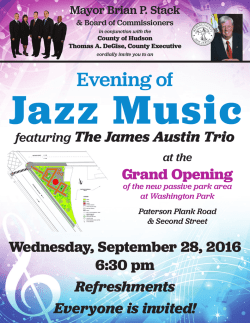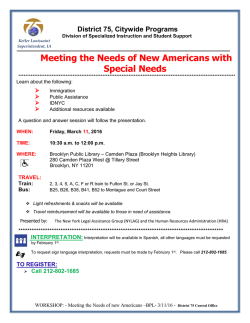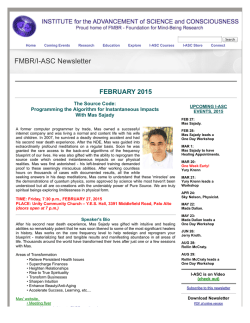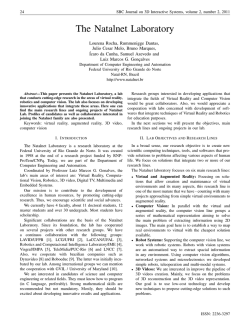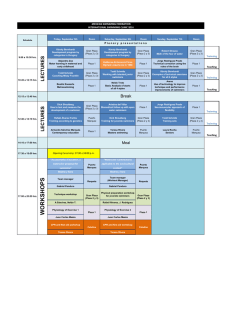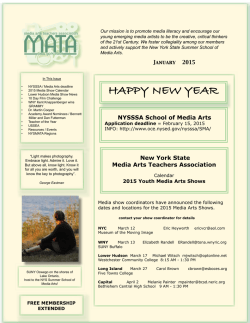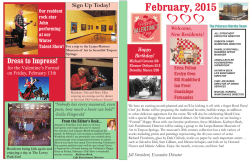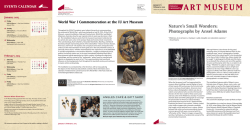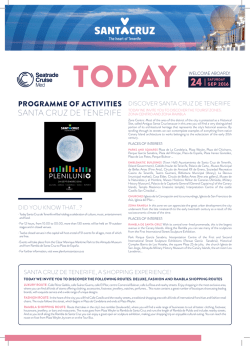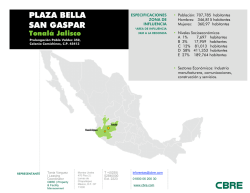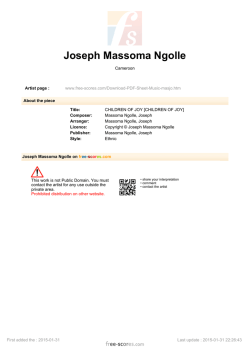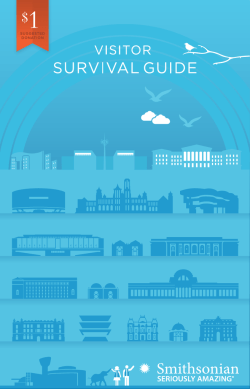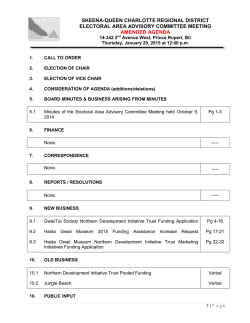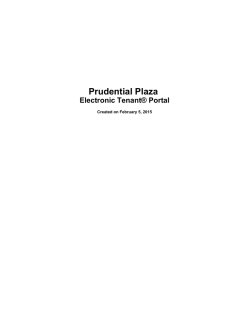
2015 Watchlist
The MAS Watchlist 2015 identifies citywide, neighborhood, and local issues that will have the most significant impact on our built environment in the upcoming year. As the leading organization dedicated to advancing intelligent urban planning and design, MAS will call attention to these items throughout the year through our planning, policy, and civic engagement work. For more information, visit MAS.org. Citywide Penn Station The busiest transit hub in the western hemisphere is overcapacity, underfunded, and in need of an upgrade. But long-overdue improvements are beyond reach unless Madison Square Garden—which shares the site with Penn Station—either relocates or provides more room for commuters. Penn represents the challenge of finding resources—and the will—to fix our crumbling, aging infrastructure. Vanishing Local Retail Keeping the streets affordable to a mix of businesses benefits all New Yorkers. The trend of beloved institutions shutting their doors—the Subway Inn, Rizzoli Bookstore, Café Edison, etc.—speaks to the market pressures and regulatory obstacles that threaten smaller, independent businesses. If these businesses cannot thrive in New York, then we risk undermining the economic diversity that makes the city so successful and dynamic Rent Stabilized Apartments The future of almost one million apartments in New York City will be decided in Albany this year, as legislators negotiate the renewal of the rent stabilization law. This is not the only housing policy that will be decided upstate — the renewal of the rent control law and the 421-a tax abatement are also on the 2015 legislative agenda. LPC Reform The Landmarks Preservation Commission faces a backlog of almost 100 buildings and sites. Many of these items have been with LPC for decades, without any final determination on their landmark status. It is now up to the preservation community to address the backlog, and take steps to update and modernize the landmarking process moving forward. MTA Budget The MTA needs $15 billion to fund critical capital improvements. This year, Albany must identify ways to pay for these improvements and ensure our transit system is equipped to accommodate the growing number of commuters. All options are on the table, from tolls on the East River bridges to multiple fare hikes to the agency selling off key real estate assets around the city. Neighborhoods East Midtown Following the decision by Mayor de Blasio to move forward on rezoning East Midtown, this year will see the Vanderbilt Corridor and One Vanderbilt project completing public review, and a new proposal for the larger East Midtown district taking shape. How these different projects evolve will have long-lasting impacts on the one of the city’s most important business hubs. Cromwell-Jerome The area surrounding Cromwell and Jerome Avenues in the Bronx is the first of three neighborhoods that the City will rezone as part of Mayor de Blasio’s Housing New York Plan (the other two neighborhoods being East New York in Brooklyn and West Flushing in Queens). The plan calls for 200,000 affordable housing units within ten years, which will require unprecedented collaboration between developers, advocates, and the City. South Street Seaport The Howard Hughes Corporation is proposing big changes for the South Street Seaport, including relocating the landmarked Tin Building, adding a canopy to the new Pier 17 building, and introducing a controversial 42-story waterfront tower. What is unclear is how the developer’s proposals will address the post-Sandy reality of rising sea levels, climate change, and the federal funds already allocated for the resilience project known as The Big U. Brooklyn Public Library BPL has partnered with Hudson Companies to build a 20-story condo building on the site of the current branch library at Cadman Plaza. This joint venture will provide BPL with a more modern library on the ground floor, as well as an additional $40 million to be put towards maintaining and restoring other libraries in the borough. This innovative project is part of broader trend of leveraging development to pay for civic assets. Flatiron Similar to the cluster of supertowers along 57th Street, several projects will be changing the Flatiron’s skyline. Developers are already planning three 50-story towers just four blocks south of the Empire State Building and directly north of the Madison Square Historic District. Such rapid development underlines the need for thoughtful planning, especially around our landmarks and open spaces. American Museum of Natural History The American Museum of Natural History recently proposed an expansion of their facilities to create new spaces for exhibitions, labs and events. Similar to other museum expansions in the city like the Frick, AMNH will face extreme scrutiny, given the high profile of the museum and the fact that the expansion would result in some loss of park space. Places The Archdiocese of New York Last year, the Archdiocese of New York announced that it would “consolidate” its network of 376 parishes in response to rising operating costs and shrinking congregations. This is the latest example of a trend among houses of worship looking to sell off coveted land and historic buildings to make ends meet, causing waves in development and preservation circles. Hudson River Park: Pier 55 The Diller - von Furstenberg Family Foundation announced a $100 million gift to Hudson River Park Trust to build “Pier55”—a new public park and performance space on Manhattan’s lower west side—as well as a commitment to cover the new park’s maintenance, programming, and operations costs for the next 20 years. This project is one example of how park administrators are creating new open space through public-private partnerships. Bronx General Post Office Young Woo & Associates is seeking to redevelop the Bronx General Post Office at the Grand Concourse. The developer has already submitted plans to introduce new office space, retail, restaurants, a rooftop terrace, while preserving the WPA-era murals in the building and a US Post Office presence. This creative reuse could serve as a test case for other underutilized post offices around the city. Times Square Plaza This fall, the City will complete its Snohetta-designed renovations of the Times Square pedestrian plaza. This as policymakers grapple with the issue of how best to govern these new public spaces. Last year, the City Council proposed a bill to license the costumed characters in Times Square as a way to prevent bad behavior from the occasional Elmo, Batman, or Cookie Monster. While that bill seems to be on hold for the moment, the pedestrian plaza conversation continues.
© Copyright 2026

